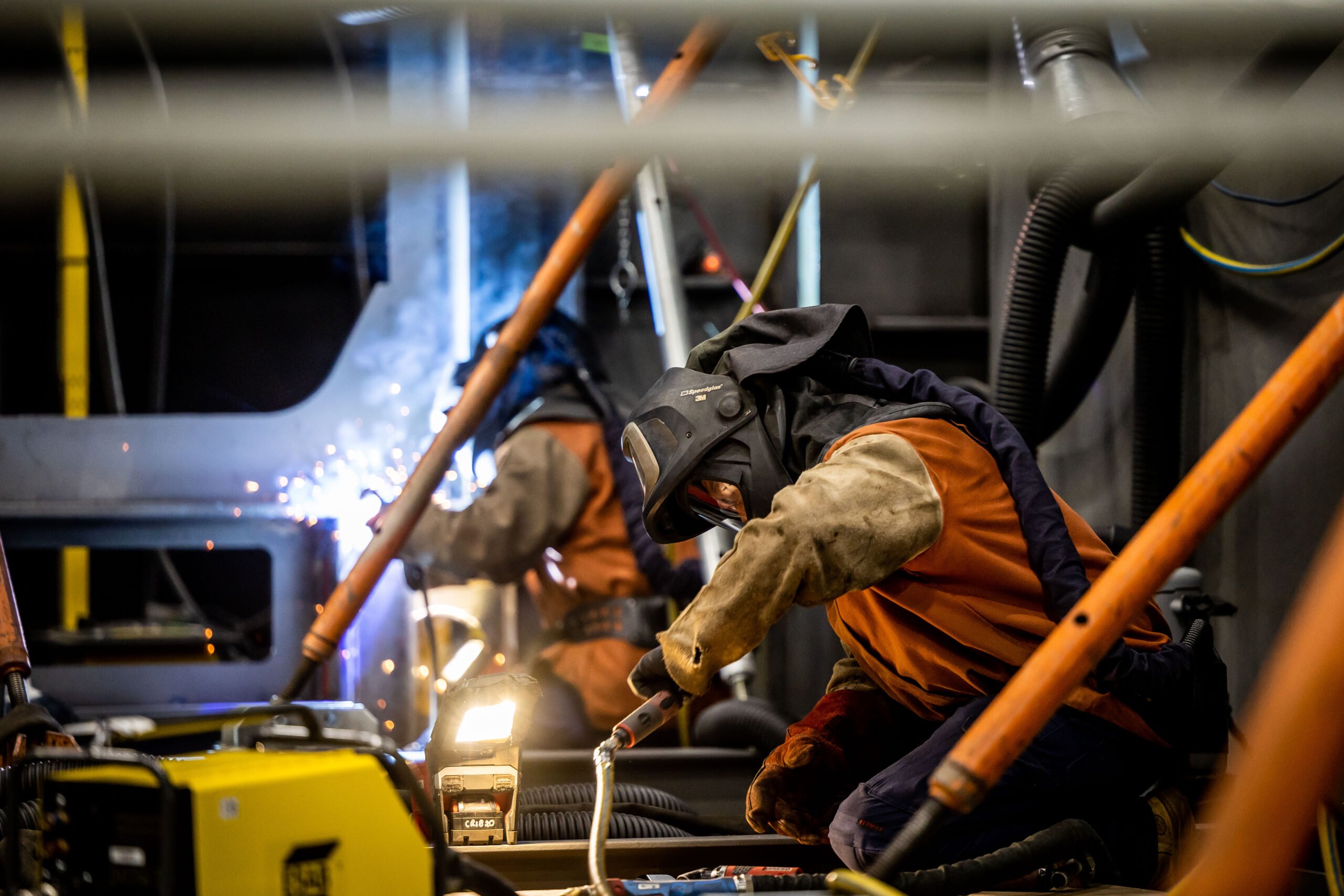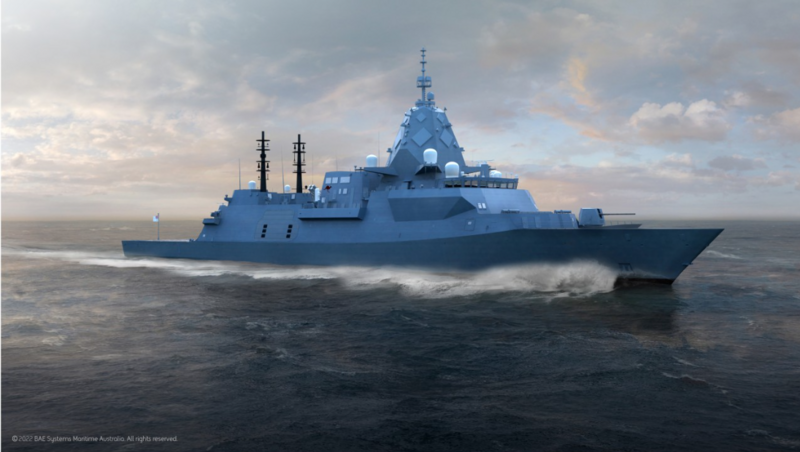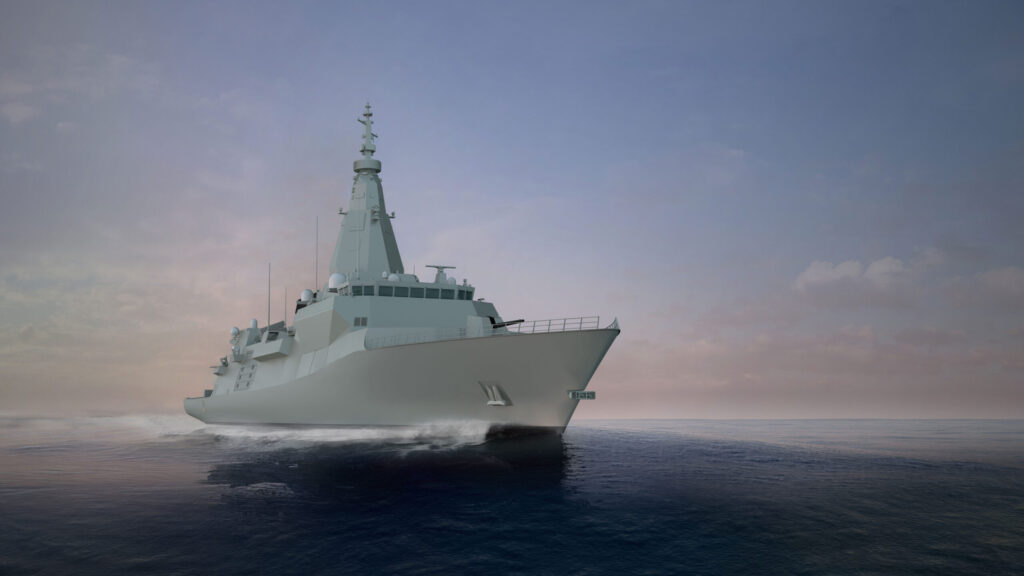You are using an out of date browser. It may not display this or other websites correctly.
You should upgrade or use an alternative browser.
You should upgrade or use an alternative browser.
Canadian Surface Combatant RFQ
- Thread starter jmt18325
- Start date
- Reaction score
- 2,363
- Points
- 1,090
Interesting. This article suggests that in order to accommodate the extra weight, the Hunter class T26 variant will be 0.6 metres wider than the reference UK design. Could we expect a similar change in the CSC design?

Hunter class frigate program could be accelerated - APDR
On August 26 there was good news during a media briefing in Adelaide by BAE Systems Australia - Maritime CEO Craig Lockhart.asiapacificdefencereporter.com
I wouldn't think so we reduced the amount of VLS to 24 vice 32 and our radar and mast is not as heavy or tall.
according to wikipedia ours are a wee bit longer

Type 26 frigate - Wikipedia
- Reaction score
- 6,666
- Points
- 1,090
Its also 2m longer. Hence why the Hunter class is 10000 tons and the CSC is 8800. It's going to impact them on top speed and endurance because they aren't changing the engineering plant.Interesting. This article suggests that in order to accommodate the extra weight, the Hunter class T26 variant will be 0.6 metres wider than the reference UK design. Could we expect a similar change in the CSC design?

Hunter class frigate program could be accelerated - APDR
On August 26 there was good news during a media briefing in Adelaide by BAE Systems Australia - Maritime CEO Craig Lockhart.asiapacificdefencereporter.com
How does an LCS get up into what looks like a parking lot with no apparent rail/crane assembly to be seen
Synchro lift or sinking barge along with a self propelled modular transport. They use the SPMT to move the ship onto the synchro lift/sinking barge, still in its metal chocks. Then the SMPT comes back ashore. The barge then sinks slowly into the water freeing the ship. AOPS were all launched this way.
SPMT link
SPMT moving ship block video
Rainbow1910
Full Member
- Reaction score
- 1,260
- Points
- 810
It depends what type of displacement you are using for comparison. The Hunter figure you list is at full displacement while I am not familiar with the CSC figure. Kevin McCoy, former President of Irving Shipbuilding went on record early last year stating that CSC would likely have a full load displacement of roughly 9,400t. There has been quite a period since then, obviously we have seen design changes such as the ships mast configuration and the loss of Mark 41 cells however, that previous info points to the fact that CSC and Hunter likely aren't incredibly far off with regard to full displacement loads. It's to be seen though how both final designs stack up.Its also 2m longer. Hence why the Hunter class is 10000 tons and the CSC is 8800. It's going to impact them on top speed and endurance because they aren't changing the engineering plant.
- Reaction score
- 6,666
- Points
- 1,090
From open source published data for CSC is 8800, and for Hunter 10000. Its is larger because they needed the space for more VLS. That's a direct quote from an Town Hall where I asked about how Hunter class was able to fit in more VLS.It depends what type of displacement you are using for comparison. The Hunter figure you list is at full displacement while I am not familiar with the CSC figure. Kevin McCoy, former President of Irving Shipbuilding went on record early last year stating that CSC would likely have a full load displacement of roughly 9,400t. There has been quite a period since then, obviously we have seen design changes such as the ships mast configuration and the loss of Mark 41 cells however, that previous info points to the fact that CSC and Hunter likely aren't incredibly far off with regard to full displacement loads. It's to be seen though how both final designs stack up.
But you are completely correct in what displacement they are refering two, design margin, full load, nominal load, empty etc...
- Reaction score
- 24,814
- Points
- 1,360
Cool, thanks Underway! Amazing what Mammoet (or Chinese knockoffs) can move. CheersSynchro lift or sinking barge along with a self propelled modular transport. They use the SPMT to move the ship onto the synchro lift/sinking barge, still in its metal chocks. Then the SMPT comes back ashore. The barge then sinks slowly into the water freeing the ship. AOPS were all launched this way.
Oldgateboatdriver
Army.ca Veteran
- Reaction score
- 2,907
- Points
- 1,010
How does an LCS get up into what looks like a parking lot with no apparent rail/crane assembly to be seen?
G2G: look at the building ahead of the LCS in view. By its side along the river, you have all those strips. The LCS is on those multi wheels lorries and is brought to that site, where the "strips" flip it sideways into the water. Pretty spectacular. Here is an example:
Oldgateboatdriver
Army.ca Veteran
- Reaction score
- 2,907
- Points
- 1,010
An aircraft carrier is a massive object. A frigate or LCS is a dinky toy! 
Weinie
Army.ca Veteran
- Reaction score
- 3,547
- Points
- 1,140
I would pay for that, just to experience it.They could charge for rides on that…
TacticalTea
Army.ca Veteran
- Reaction score
- 1,486
- Points
- 1,160
This video is the most awesome of any such launch ceremony I've ever seen!G2G: look at the building ahead of the LCS in view. By its side along the river, you have all those strips. The LCS is on those multi wheels lorries and is brought to that site, where the "strips" flip it sideways into the water. Pretty spectacular. Here is an example:

Australia's first Hunter-class frigate to be operational in 2031
The expected time frame for the first of the Australian Navy's Hunter-class frigates is 2031, acting Prime Minister and defence minister Richard Marles revealed.
Anyone care to guess what this means for the first CSC? Also, assuming the above is accurate, looks like the Australians have also dropped the 32-cell Mk 41 (24 is reference in the article).
- Reaction score
- 2,846
- Points
- 1,190
I didn't see anything in the article that said anything about he Hunter-class experiencing any new delays, and besides, at this point any delays are most likely going to be the result in a country's own internal procurement/production/contracting issues.
- Reaction score
- 6,666
- Points
- 1,090
Ours is expected around that time as well according to the project timelines (perhaps 32 I'd have to look again). However everyone knows it will likely won't be fully operational until likely 2034.
Australia's first Hunter-class frigate to be operational in 2031
The expected time frame for the first of the Australian Navy's Hunter-class frigates is 2031, acting Prime Minister and defence minister Richard Marles revealed.www.navaltoday.com
Anyone care to guess what this means for the first CSC? Also, assuming the above is accurate, looks like the Australians have also dropped the 32-cell Mk 41 (24 is reference in the article).
And the drop to 24 VLS is a surprise, but not unexpected considering the Aussies are having a hell of a time with their enlarged hull (or so I've heard).
Edit: from the article...
8800 tons and VLS for Sea Ceptor is a cut and paste from the CSC. Type 26 has the same but a different tonnage. How much you want to bet they've duffed up the article and mixed up the various programs.The Hunter-class ships will have a 8,800-tonne full load displacement and will be approximately 150 metres long.
They will be equipped with an advanced anti-submarine warfare (ASW) capability, a 24-cell strike length Mk 41 VLS for long-range strike weapons such as the Tomahawk, a vertical launch silo (VLS) for Sea Ceptor anti-air missiles, a 5-inch gun, and will be capable of landing a Chinook helicopter on its flight deck.
- Reaction score
- 6,666
- Points
- 1,090
Another Article regarding the Hunter class here:
So Australia thinks their ship will be lighter then the above article and that they are going to get additional VLS out of the design as well. I fully expected Oz to lenthen the ship by 2m to accomodate more VLS, but we will see what they end up doing.
The changes to the Type 26 design required to meet the Commonwealth’s specifications include a redesigned hull which is in sections slightly larger than that of the reference ship, to accommodate greater margin capacity in support of capabilities such as the CEA Technologies CEAFAR 2 radar, Aegis combat system (with an Australian Interface), additional Vertical Launch System (VLS) cells, changes to the aviation system and the four Nulka decoy system launchers.
Lockhart says the Hunter-class frigate will have a displacement of around 8,200 tons (light ship). “We’ll get a good indication in October when HMS Glasgow (the first of the Royal Navy’s eight Type 26 vessels) goes into the water; we’ll get a good indication of the conversion of the model weight to the actual weight,” he added.
So Australia thinks their ship will be lighter then the above article and that they are going to get additional VLS out of the design as well. I fully expected Oz to lenthen the ship by 2m to accomodate more VLS, but we will see what they end up doing.
- Reaction score
- 24,814
- Points
- 1,360
Mmmmmmm…..duuuuuff…8800 tons and VLS for Sea Ceptor is a cut and paste from the CSC. Type 26 has the same but a different tonnage. How much you want to bet they've duffed up the article and mixed up the various programs.
Rainbow1910
Full Member
- Reaction score
- 1,260
- Points
- 810
Euronaval 2022: Canadian Surface Combatant preliminary design review nears completion
Lockheed Martin Canada is expecting to complete the preliminary design review (PDR) for the country's next-generation surface combatant in the coming months – marking...
www.janes.com

Canadian Surface Combatant ship to see design review within weeks: Lockheed Martin - Breaking Defense
The CSC will replace Canada's Iroquois-class destroyers and the Halifax-class frigates.
New CSC info, preliminary design review is nearing completion.
- Reaction score
- 9,518
- Points
- 1,160
Euronaval 2022: Canadian Surface Combatant preliminary design review nears completion
Lockheed Martin Canada is expecting to complete the preliminary design review (PDR) for the country's next-generation surface combatant in the coming months – marking...www.janes.com

Canadian Surface Combatant ship to see design review within weeks: Lockheed Martin - Breaking Defense
The CSC will replace Canada's Iroquois-class destroyers and the Halifax-class frigates.breakingdefense.com
New CSC info, preliminary design review is nearing completion.
I saw the Breaking Defense article.
Standouts:
1 - Getting closer to a real cost (about 4 BCAD or 3 BUSD apiece) - In a world of billion dollar B2s that doesn't seem unreasonable.
Canada selected Lockheed’s design in February 2019 and plans to purchase 15 ships for roughly $55 to $60 billion CAD ($40.1 to $43.8 billion USD),
2 - Silence costs money
“One of the first requirements you have to look at is that Canada asked for a very quiet platform,” he said, adding that some features that would reduce a ship’s noise signature are not necessarily included on all ship designs.
3 - BMD (Ballistic Missile Defence) Commitment? - For not with? Plausible deniability? With the support of the government or just the bureaucracy?
“Canada [also] made a decision decision that they wanted to be part of the ballistic missile defense capability”
Similar threads
- Replies
- 5
- Views
- 9K
- Replies
- 0
- Views
- 10K
- Replies
- 15
- Views
- 40K


